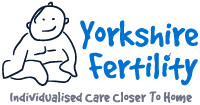In light of the upcoming World Prematurity Day this Friday - 17th November, we thought we would discuss the risks around multiple pregnancy which in turn can result in premature birth, and how we work to prevent this from happening in our clinic.
Multiple births (twin, triplet or more babies) can seriously harm the health of both mother and babies. At least half of twins are born premature and underweight, which can lead to serious (in some cases, long term) health problems. Early or late miscarriage is also more likely if you’re carrying multiple babies. Mums of multiples are also more likely to suffer from health problems such as high blood pressure and gestational diabetes.
So how can we prevent multiple births in fertility treatment you may ask. Well as a professional and experienced team we do our very best to prevent multiple pregnancies by monitoring you closely. When undergoing ovulation induction treatment with fertility drugs we perform regular scans to keep track of follicular growth and advise you to abstain from intercourse if we feel there are too many follicles growing. In IVF treatment we will always only transfer one embryo (Single Embryo Transfer or SET) unless the medical and embryology team advise that a double embryo transfer is suitable for your individual case, this may be due to age for example. However, this is a medical decision and is only made by an experienced doctor or embryologist. Any remaining healthy embryos are of course frozen for future use if you wish.
So why are there so many IVF twins?
The reason for this is that in the past there were a lot of double embryo transfers for women, leading to the higher rate of multiple pregnancy. However research has since proved that this is not the safest treatment because of all the risks associated for the mother and baby. In most patients transferring more than one embryo does not double the chance of success. the HFEA (Human Fertilisation and Embryology Authority) have set a target for clinics to reach which is that less than 10% of their IVF births should be multiples. Here at Yorkshire fertility, 15 to 20 years ago our multiple pregnancy rate was close to 20%. Now it is around 5% whilst our pregnancy and live birth rate continues rising year on year. Our aim at Yorkshire fertility is to ensure that, at the end of the treatment process, we finish up with a healthy mum with a healthy baby and a happy family.
We do our best to keep multiple pregnancies well within the target and our specialist team will always explain the process to you before any treatment commences so that you are fully informed. If you would like to discuss this further or have any questions please email info@yorkshirefertility.co.uk








